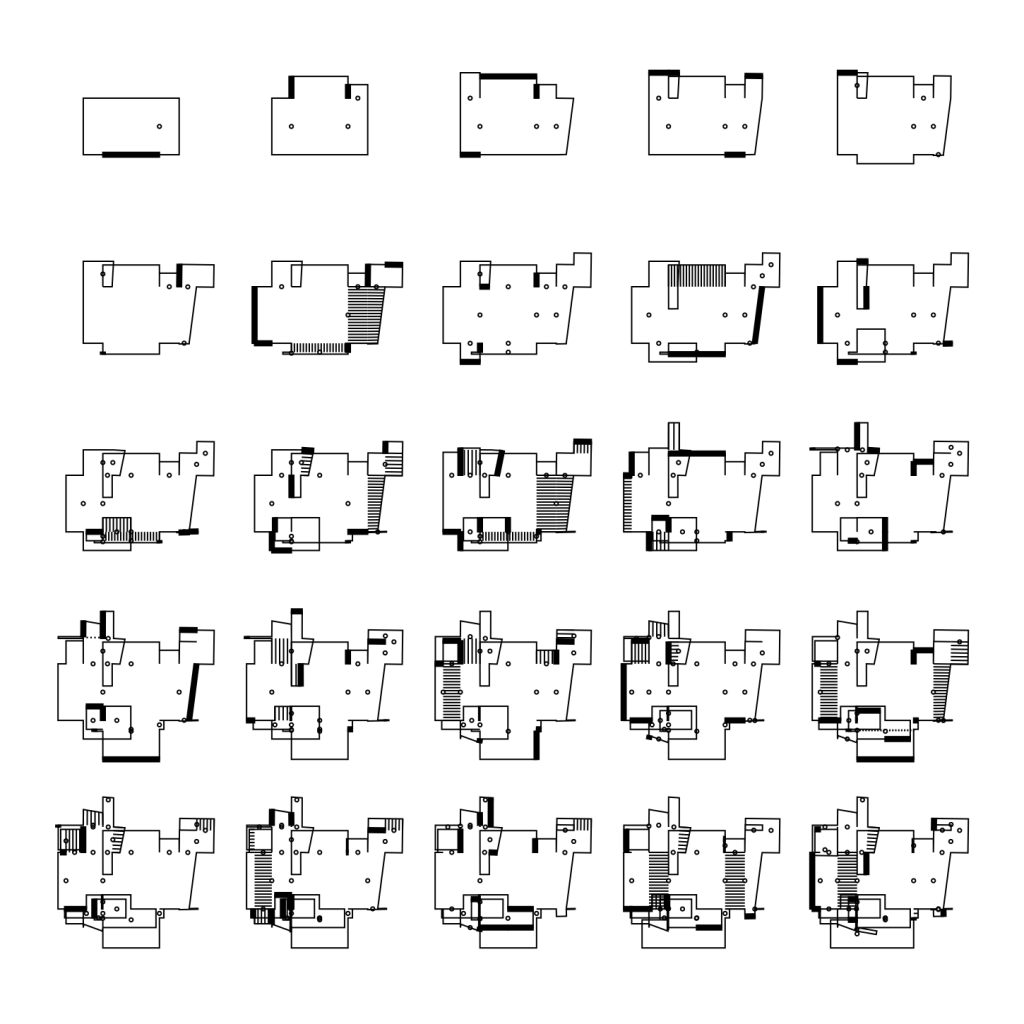
Anders Hoff’s “Impossible Architecture” (2018) is an experiment in morphing a 2D, outline of a rectangle to create a completely random “floor plan”. These insane-looking pseudo-floor plans are mostly impossible to construct, but as we look at them we attempt to make sense of them. They look convincing, with the addition of more randomly generated elements – circles, line arrays, and thick lines that we perceive as columns, stairs, and thickened walls, respectively.
He explains this recursive process on his website: a randomly selected segment of a line is extruded to a random distance, which essentially adds 3 line segments to the outline. The selected line segment is then deleted, and the process repeats. This recursion speaks for Hoff’s principles of creating “interesting and complex behavior” from systems with simple rules. He takes inspiration from nature, geometry, writing systems, and – as is obvious from this experiment – architecture.
![[OLD SEMESTER] 15-104 • Introduction to Computing for Creative Practice](wp-content/uploads/2023/09/stop-banner.png)